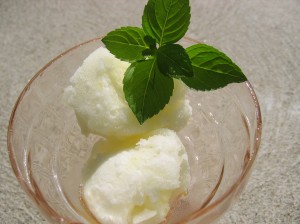Tue 31 Aug 2010
Steamed Corn on the Cob
Posted by Recipe Sleuth under Favourites
No Comments
It’s been a exceptional season for corn and we plan to keep enjoying it as long as we can. I frequently remove the kernels from the cob and sauté them with onions, peppers and herbs (see the recipe for Confetti Corn on my July 18 post). But sometimes I just want to enjoy it on the cob. Most recipes suggest boiling corn on the cob, but for the past 20 years or so, I’ve been steaming it in the microwave and I think this method beats boiling. In addition to producing tender corn, this method has a couple of other things going for it. First, you can prepare the cobs ahead of time and simply microwave them at the last minute, meaning you can avoid boiling water and the precise timing the boiling method requires. As well, because each cob is buttered and encased in its own wrapping, it is easy to serve and stays hot until you are ready to eat it. Try this method and let me know if it works for you.
To avoid additives and preservatives in this recipe, be sure to use butter that does not contain colour.
Ingredients:
Fresh cobs of corn
Melted butter (feel free to add flavourings or fresh herbs to the butter, such as cayenne, chile powder and chives)
Preparation:
Remove husks and silk from corn. Rinse cobs of corn. Take a piece of plastic wrap that is about a foot long and place it on your work surface. Place one cob of corn toward the bottom of the plastic wrap and brush it with the melted butter. Then roll up the corn in the plastic wrap (make sure the plastic wrap goes around the corn at least once) and loosely twist the ends. Repeat with remaining cobs of corn. Place the cobs on a microwave-proof dish and microwave on high for a total of 2 minutes per cob. For example, microwave four cobs of corn for 8 minutes. If the cobs are large, add one more minute (i.e., four large cobs would take 9 minutes). Let stand for at least five minutes before serving. To keep the corn hot even longer, cover the platter with a clean dish towel. Unwrap and enjoy!

























